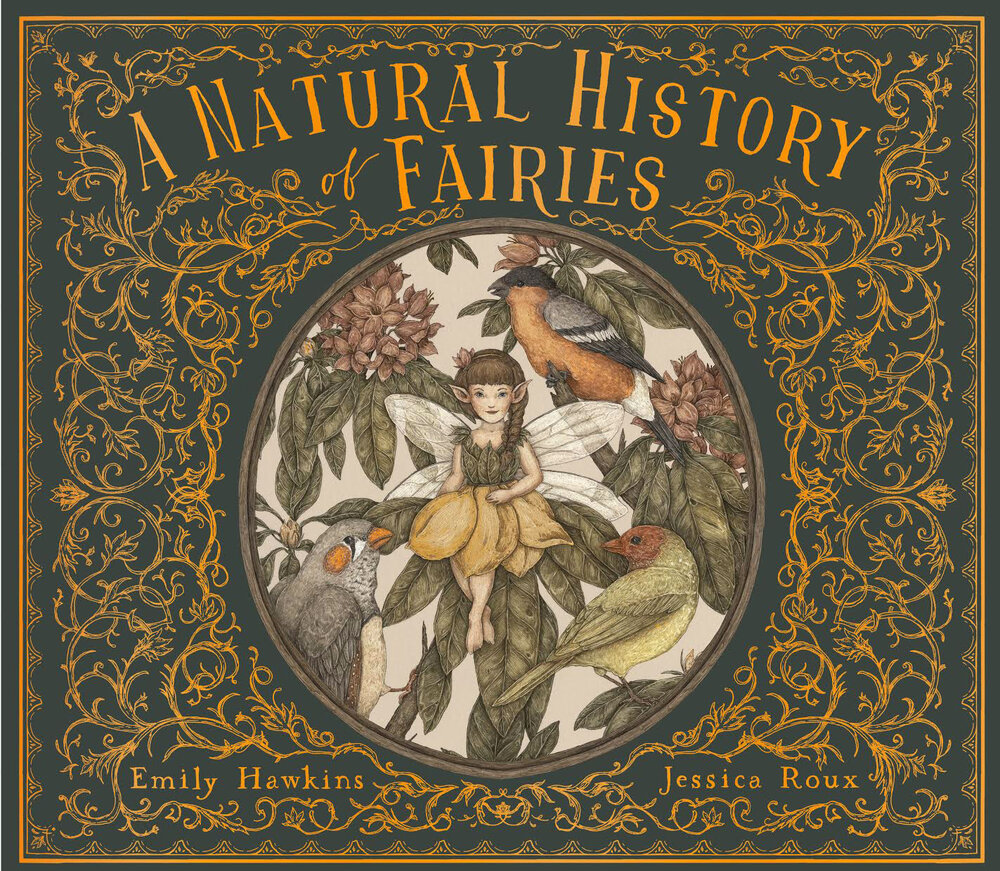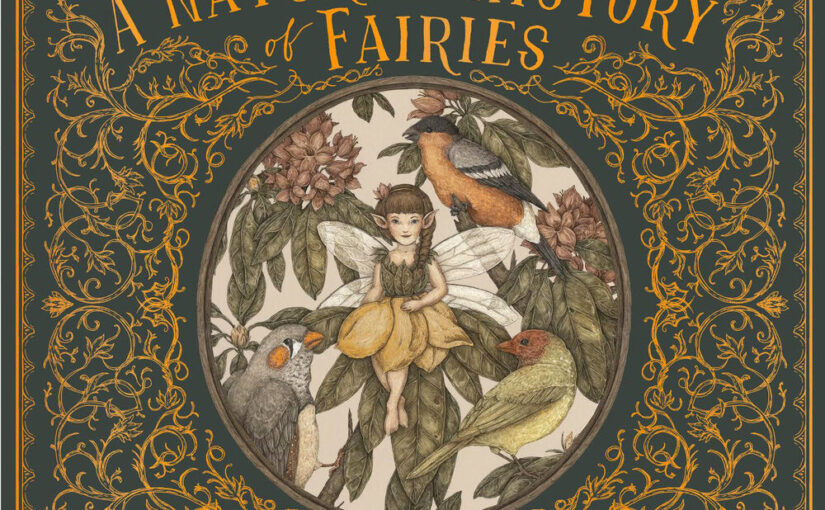“What’s this book about”, our nine-year-old asked. He then started to look through it and was engaged. I told him that it’s about fairies, where they live, what they do, and the different types of them. “Is the tooth fairy in it?”, he asked. The moment he heard “no, but….”, he closed the book and ran to the bathroom to coincidentally brush his teeth.
Fairies are real and if you can’t see them it’s because you don’t want to. That’s the kind of person who would enjoy A Natural History of Fairies. If you’re dubious, look closer at the book and your opinion will morph. Much like the green patch of moss under the tree that suddenly looks like it could be a landing pad or pillow for an imp that’s trying hard not to be seen. It starts from the moment you feel the cloth, embossed cover, with the smooth illustration and the start to marvel at the details and love that went into that one image.

Astute readers will see that the book wasn’t written; rather it was compiled by Emily Hawkins. After the table of contents and a couple of historical documents from the late 1800s and early 1900s, we learn that she’s been studying fairies for the past 30 years. She’s slept in swamps, crawled around the desert, and any other place a fairy might live. Hawkins also draws the parallel between the platypus and fairies. Both of them defy categorization, but people know and can touch the platypus, why not have the same faith in winged creatures?
Much like birds with their hollow bones, fairies have large air pockets in their marrow, which allow them to take flight. We see a cross-section of the Holly Blue Fairy‘s bone, as well as an overview of their wings, which makes them special and why their flight pattern is fluttering and seemingly random.
You’re curious about the life cycle of a fairy? Maybe you want to know about how they camouflage themselves in the wild? I know that people look different in various parts of the world and sure enough, fairies in Antarctica are visually different from those in Europe. Fairies also have to adapt to different seasons and how they do that is not too dissimilar from other small creatures.
Regardless of your current opinion, or belief on fairies, the artistic beauty and attention to detail in A Natural History of Fairies is impressive. Even our nine-year-old, who clearly doesn’t want to be seen acknowledging them, was attracted to the book. The art by Jessica Roux is in lockstep with this world. You will believe that Roux and Hawkins collaborated on the world’s first in-depth look at this race.
The art is real and perfectly scaled. You’ll see fairies all over the world and in any position a kid would possibly think of them in. There’s even a species of house fairies that live in cracks, teacups and make friends with other living things in the attic. Each color is a different canvas that tells a specific area of what they’re doing. A Natural History of Fairies is oversized and immersive. It’s more of an encyclopedia for all things fairy than a passive look at things you thought only lived in middle-Earth.
The content is great for readers aged six and up. It’ll really capture their imagination, make them want to read, and has illustrations that make it effortless to happen.
A Natural History of Fairies is by Emily Hawkins with illustrations by Jessica Roux and on Quarto Knows.
There are affiliate links in this post.





 Facebook
Facebook Twitter
Twitter Flickr
Flickr GooglePlus
GooglePlus Youtube
Youtube
One thought on “A Natural History of Fairies is THE book on this winged species”
Comments are closed.